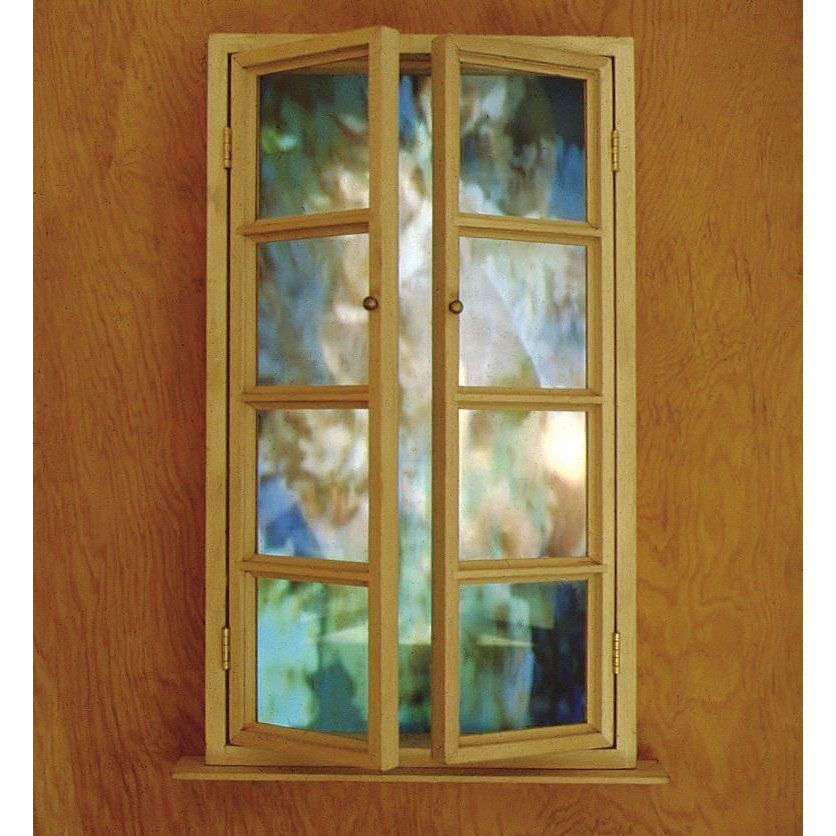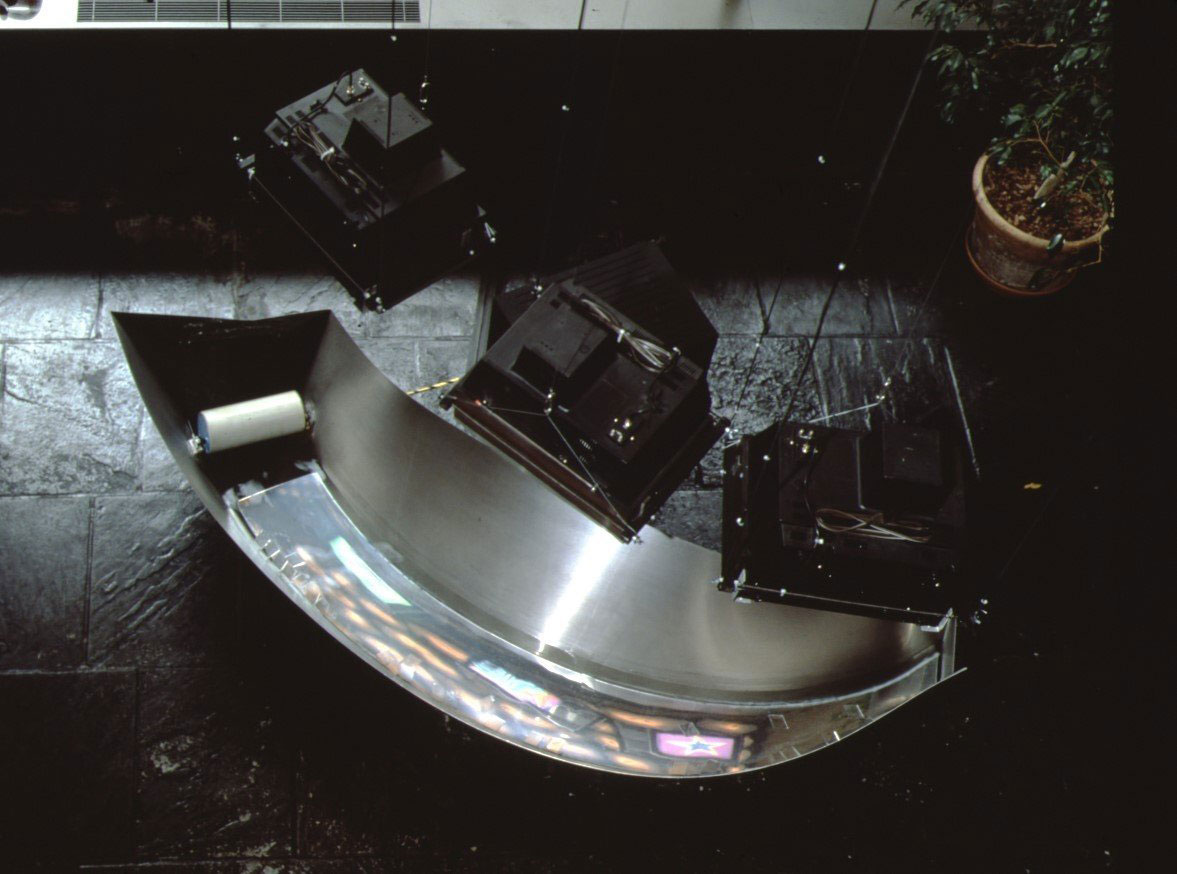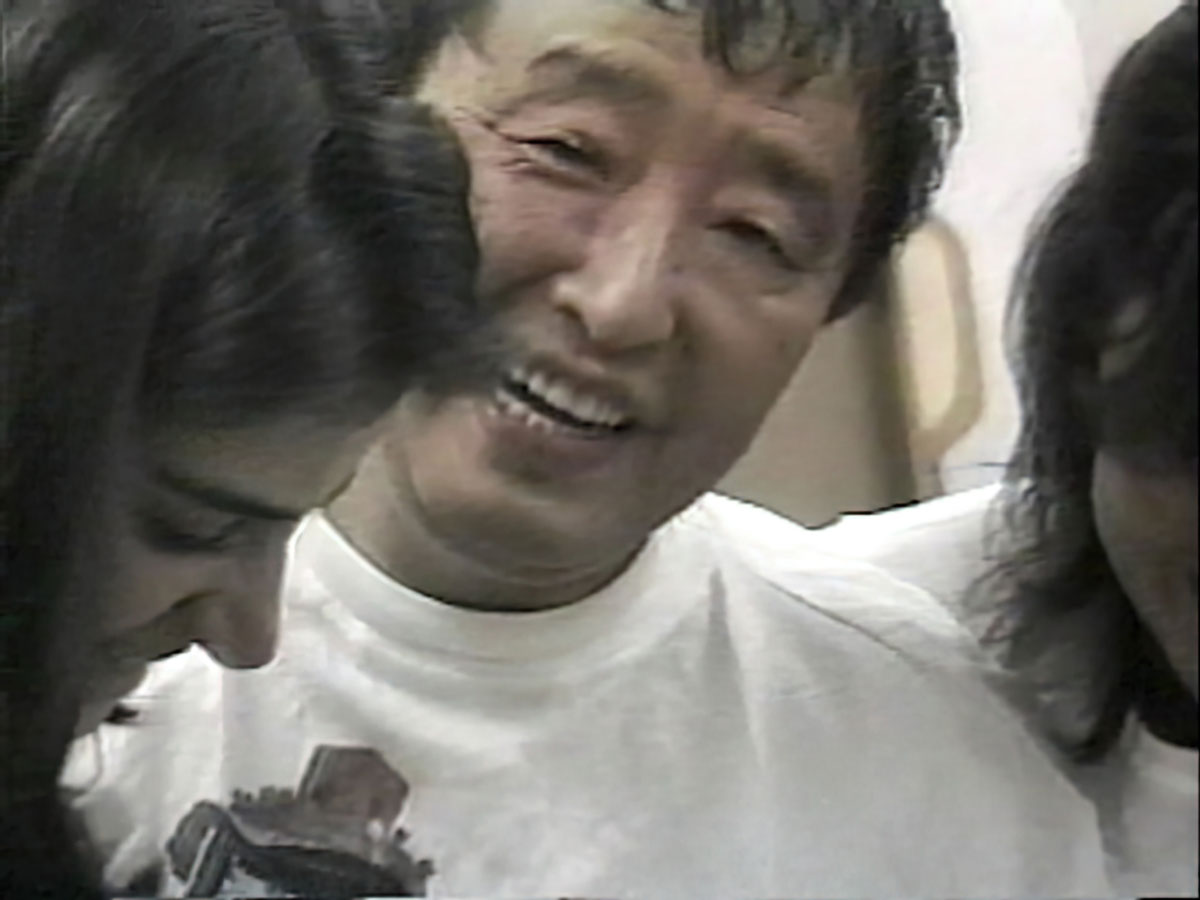PRESENTATION: Viva Video! The Art and Life of Shigeko Kubota
 Shigeko Kubota was one of the first artists to adopt the portable video camera Sony Portapak in 1970. Kubota is known for constructing sculptural installations with a strong DIY aesthetic, which include sculptures with embedded monitors playing her original videos. She was a key member and influence on Fluxus, the international group of avant-garde artists centered on George Maciunas.
Shigeko Kubota was one of the first artists to adopt the portable video camera Sony Portapak in 1970. Kubota is known for constructing sculptural installations with a strong DIY aesthetic, which include sculptures with embedded monitors playing her original videos. She was a key member and influence on Fluxus, the international group of avant-garde artists centered on George Maciunas.
By Dimitris Lempesis
Photo: MOT Archive
Shigeko Kubota belongs to a generation of Japanese women artists (Yayoi Kusama, Yoko Ono, Takako Saito, Mieko Shiomo, Atsuko Tanaka) who brought deep changes not only to the fields of installation, performance art, and video, but also to the relationship between art and music in the 1960s and 70s. The exhibition “Viva Video! The Art and Life of Shigeko Kubota” is the first major survey of the work of Shigeko Kubota in Japan nearly in three decades. Born in Niigata and educated in Tokyo, Kubota moved to New York in 1964 to join the Fluxus movement. Kubota became internationally known as a pioneering artist for her “video sculpture” which integrated video into three-dimensional structures. Her contribution to contemporary art, however, has yet to be adequately evaluated. The exhibition presents multivalent views of Kubota’s life and work through drawings, photographs, archival documents, and video – including her “Duchampiana” video sculpture series , which was inspired by the artist’s meeting with Marcel Duchamp. “Skater” (1991-92), modeled after figure skater, Midori Ito, who won the silver medal at the 1992 Winter Olympic games, and “Korean Grave” (1993) is based on Kubota and Nam June Paik’s visit to Paik’s family grave, are the video sculptures to be shown in Japan for the first time. Photographs and letters which demonstrate her relationships with various artists are world premiere. The first section, “Early Years: From Niigata to Tokyo” introduces Kubota’s upbringing in Niigata and artistic development in Tokyo through personal archival documents, photographs, and some early artworks. Born in 1937 and raised in a relatively liberal household, Kubota aspired to be a sculptor and studied at the Tokyo University of Education. Upon graduation in 1960, she became involved in Tokyo’s close-knit avant-garde art community. Along with the documentation of Kubota’s first solo exhibition at Naiqua Gallery (1963), some works by her contemporaries, such as Group Ongaku, Hi Red Center, and Yoko Ono will contextualize Kubota’s position within the Tokyo avant-garde. After realizing the limited opportunities for a female artist there, Kubota decided to move to New York. The second section, “To New York” traces Kubota’s activities in the avant-garde collective, Fluxus, and her activities with the international artists based in New York. While working closely with the impresario of Fluxus, George Maciunas, Kubota produced her witty Flux objects, such as, “Flux Napkin” (1965), paper napkins with cutouts of a face that were used during Fluxus meals and “Flux Medicine” (1966) a set of pills she invented for Maciunas because he was always ill. Her performance, “Vagina Painting” (1965), presented during the Summer Perpetual Fluxus Festival, in which she painted red smears on a sheet of white paper laid on the stage with a large paintbrush attached between her legs. The performance marked the first anniversary of her move to the United States, and affirmed her independence as an artist and woman artist who clearly chose to distance herself from her Japanese roots. The last part of the section sheds light on her involvement with Sonic Arts Union, which included her first husband, composer David Behrman. Encounter with Video: After 1970, Kubota started making video works while living with Nam June Paik, who would later become her life partner. This important transition to video is shown with early single-channel videos, such as, “Broken Diary: Europe in Half Inch a Day” (1972), which was created by traveling through Europe with a SONY portapak. Her multimedia collaboration with women artists such as Mary Lucier, are also shown. Duchampiana-The Birth of Video Sculpture: Propelled by her chance encounter with Marcel Duchamp in 1968, Kubota took photographs of the chess concert “Reunion”, between Marcel Duchamp and John Cage, and created a book with audio, “Marcel Duchamp and John Cage” (1970). The “Duchampiana” series, which she produced as an homage to Duchamp became Kubota’s signature video sculptures. One of the series, “Nude Descending a Staircase” (1975–76/83), shows the repeated movement of a female nude model walking down a staircase on four monitors encased within a wooden staircase. For its witty reinterpretation of Duchamp’s renowned painting in the time-based medium of video, it became the first video sculpture to have been acquired by the Museum of Modern Art, New York. After Kubota was invited to the international exhibition of contemporary sculpture, Documenta VI in Kassel, Germany in 1977, her visibility in Europe increased and she often exhibited her work there. The fifth section, “Expanding Video Sculptures” showcases Kubota’s works created in the 1980s and 1990s, to demonstrate the spatial and temporal expansion of her video work into large-scale installations, using elements such as water and kinetic motion. Signature works from the period include: “River” (1979-81) which consists of three monitors hung face down from the ceiling and a stainless-steel basin filled with the moving water. These works exist in the viewer’s space and invite interaction and contemplation from multiple vantage points. The Art and Life: In 1991, the American Museum of the Moving Image in New York organized Kubota’s first museum-scale solo exhibition, and a slightly different version which traveled to the Hara Museum in Tokyo, Stedelijk Museum in Amsterdam, Kunsthalle zu Kiel, and Fundazione Mudima in Milan. Kubota’s success was abruptly interrupted by her husband Paik’s stroke in 1996. Henceforth, Kubota focused on assisting him with his physical disabilities and logistically with his exhibition practice, until his death in 2006. While fighting her own illnesses in the last decades of her life, she produced her last body of work which reflects on her life with Paik and her love for him.
Photo: Shigeko Kubota, Duchampiana: Bicycle Wheel One, Two, Three and Three Mountains, Installation view at Hara Museum of Contemporary Art, 1992, Photo by Yoshitaka Uchida, Courtesy of Shigeko Kubota Video Art Foundation; © Estate of Shigeko Kubota
Info: Curators: Mayumi Hamada, Azusa Hashimoto, Mihoko Nishikawa and Midori Yoshimoto, Museum of Contemporary Art Tokyo (MOT) , 4-1-1 Miyoshi, Koto-ku, Tokyo, Japan, Duration: 13/11/2021-23/2/2022, Days & Hours: Tue-Sat 10:00-18:00, www.mot-art-museum.jp



Right: Shigeko Kubota, Niagara Falls, 1985/2021, Collection of Shigeko Kubota Video Art Foundation, Installation view at the Niigata Prefectural Museum of Modern Art, 2021, Photo: Yukihiro Yoshihara, © Estate of Shigeko Kubota




